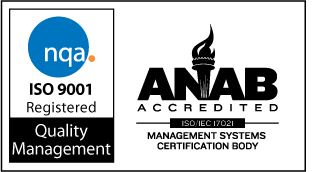
|
7108
S. Alton Way, Unit I |
(303) 758-2728
Home > Glossary of Terms > M Definitions
Glossary - M's
Mask (sc) a glass plate covered with an array of patterns used in the photomasking process. Mask patterns may be formed in emulsion, chrome, iron oxide, silicon or a number of other opaque materials.
Masterbatch (r) a homogeneous mixture of rubber and one or more materials in known proportions for use as a raw material in the preparation of the final compounds.
Mastication (r) a breakdown or softening of raw rubber, or a mix, by the combined action of mechanical work (shear) and atmospheric oxygen, sometimes accelerated by the use of a peptizer and frequently at elevated temperatures.
Metalization (sc) 1) the deposition of a thin film pattern of conductive material onto a substrate to provide interconnection of electronic components or to provide conductive contacts. 2) the layer of high-conductivity metal used to interconnect devices on a chip. Aluminum is commonly used.
Microhardness (r) hardness measured with an instrument having a smaller indentor and applying a lower force than the standard instrument, permitting measurements on smaller specimens or thinner sheets that are not amenable to measurement by normal instruments.
Micron (µm) a unit of length, one millionth of a meter.
Mill (r) a machine used for rubber mastication, mixing or sheeting, having two counter-rotating rolls with adjustable longitudinal axis separation that usually rotate at different speeds.
Mismatch (r) a defect resulting from differing cross-section dimensions in adjacent mold halves.
Mixer (r) a machine that incorporates and disperses compounding ingredients into rubber to form a mix or a compound through the action of mechanical work (shear).
Mixer, internal (r) a machine with a closed cavity in which a specially shaped rotor (or rotors) masticates the rubber or incorporates and disperses compounding materials into the rubber, or both.
Modulus, tensile (r) See tensile stress, at given elongation the preferred term.
Modulus, Young’s the ratio of normal stress to corresponding strain for tensile or compressive stresses below the proportional limit of the material.
Mold cavity (r) hollow space in the mold designed to impart the desired form to the product being made.
Mold marks (r) surface imperfection transferred to a molded product from corresponding marks on a mold.
Mold release (r) see release agent (mold).
Molding shrinkage (r) the difference in dimensions between a molded product and the mold cavity in which it was molded, both the mold and product being at normal room temperature when measured.
Molding, compression (r) the process of forming a material to a desired shape by flow induced by a force applied after a material is placed in the mold cavity.
Molding, injection (r) the process of forming a material by forcing it from an external heated chamber through a sprue (runner, gate) into the cavity of a closed mold by means of a pressure gradient that is independent of the mold clamping force.
Molding, transfer (r) the process of forming a material by forcing it from an auxiliary heated chamber through a sprue (runner, gate) into the cavity of a closed mold by means of a pressure gradient that is dependent on the mold clamping force.
Molecule smallest quantity of a substance that retains the properties of that substance.
Monomer (r) a low-molecular-weight substance consisting of molecules capable of reacting with like or unlike molecules to form a polymer.
Mooney viscosity (r) the measurement of the plasticity of compounded or uncompounded elastomeric seal material.
(sc) This term is generally associated with the semiconductor industry.(r) This term is generally associated with the rubber industry.
Next N's
Our specialty is solving sealing problems for original equipment manufacturers. We carry o-rings, seals, custom molded rubber parts, wipers, diaphrams, valves and u-cups in all types of materials including Kalrez®, FKM fluorocarbon, Simriz®, nitrile (buna-n), silicone, rubber, neoprene, polyurethane, TFE and FEP encapsulated.
We are located in the Denver Technological
Center in a suburb of Denver, Colorado
©1997-2017, Problem Solving Products, Inc.
Website Map | Privacy Statement
| Terms of Use

